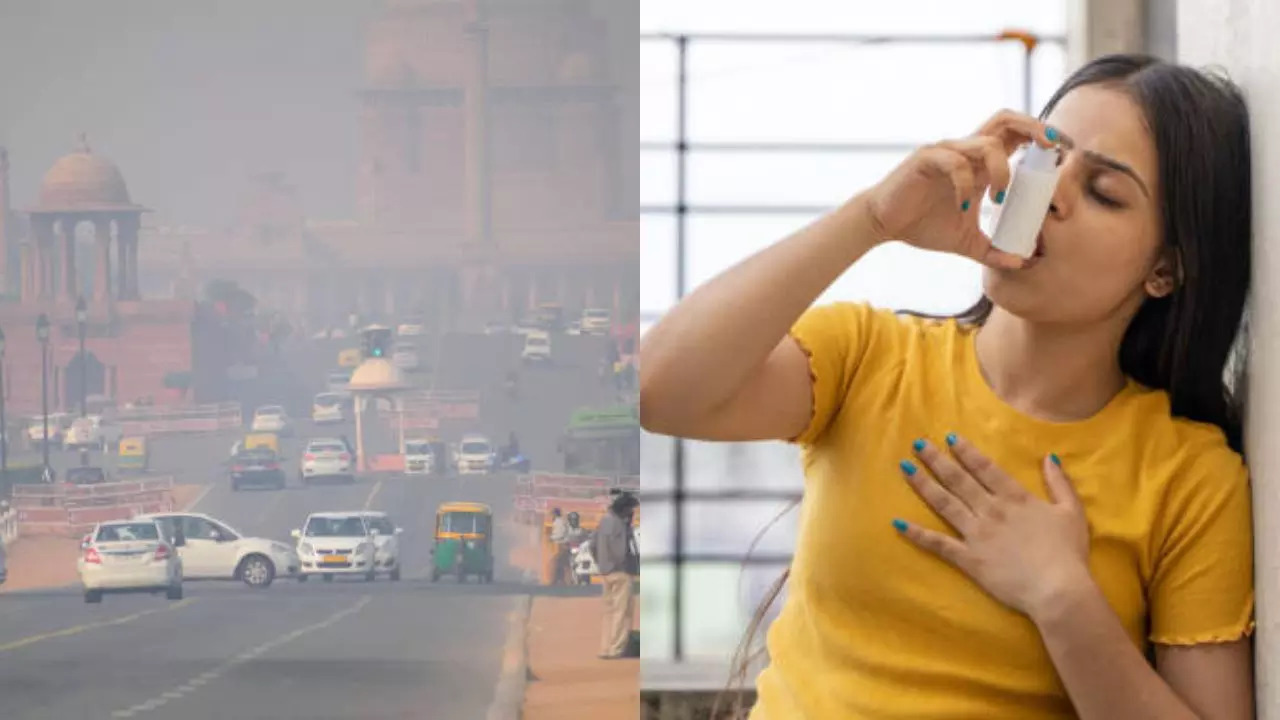Contents
-
news
-
Health
Don’t breathe! Delhi-NCR’s air at dangerous turn, respiratory diseases increase by 15%; How to protect yourself?
Even as pollution continues to hit the Delhi-NCR region with a blanket of smog and toxic gases, doctors say there has been a 15 per cent rise in respiratory diseases, including asthma, bronchitis and chronic obstructive pulmonary disease. Read on to learn how you can protect yourself, including getting vaccinated.

Conditions like asthma, bronchitis and COPD have increased by at least 15 per cent due to consecutive AQI above 300 in the last few days.
India’s capital and its surrounding areas are grappling with severe pollution, smog and air toxicity, leading to persistent respiratory illnesses. According to doctors, the air quality is extremely hazardous for citizens and is contributing to both short-term and long-term life-threatening diseases.
Conditions like asthma, bronchitis and chronic obstructive pulmonary disease (COPD) have increased by at least 15 per cent due to the persistent air quality index (AQI) above 300 in the last few days. Dr Arjun Khanna, Head of Department and Senior Consultant, Department of Pulmonary Medicine, told Times Now, “Breathing polluted air can cause irritation in the airways, resulting in shortness of breath, cough, wheezing, asthma attack and chest pain. It is possible.”
“In fact, it not only triggers new cases of diseases like asthma, but also makes pre-existing respiratory diseases worse, leading to frequent asthma attacks and exacerbation of COPD. Additionally, it may also contribute to the rapid exacerbation of chronic diseases,” he said.
How does air pollution endanger your breathing?
According to the data, hospitals in New Delhi and surrounding areas are also feeling the pressure – with multiple reports reporting a rise in patients showing symptoms of respiratory distress. Ram Manohar Lohia Hospital has started special out-patient department (OPD) services to cater to the increasing number of pollution-related cases.
Doctors say these pollutants – including nitrogen dioxide and PM2.5 – get deposited in large amounts in your respiratory tract and lungs, causing inflammation. Subsequently, this causes you to:
- excessive cough
- having trouble breathing
- constant wheezing
- your nose and throat are irritated
- feeling chest pain while breathing
- More breathlessness when doing outdoor activities
- Asthma attacks or COPD flare-ups
- need to use your reliever inhaler more often
“PM2.5 has increased, and the particles that enter your lungs acutely aggravate already stable lung disease. “Due to these factors – reduced immunity, resulting in greater susceptibility to viral and bacterial infections, especially in immunosuppressed patients,” Dr. said Piyush Goyal, Consultant – Pulmonology, Manipal Hospital.
Dr. Goyal said that the situation is going to get worse as the winter progresses.
Ways to protect yourself from increasing respiratory problems
Dr. Khanna said some of the ways you can protect your lungs and prevent pre-existing respiratory problems from worsening is to identify triggers and stay away from them. Also, people who have asthma should take preventive measures immediately to avoid any emergency. “The first preventive approach should be to ensure that you are able to identify potential triggers as well as avoid them.”
“Additionally, it is important to have an action plan ready in consultation with your doctor, have an inhaler with you – especially in case of asthma patients and take regular inhalation therapy as prescribed by your doctor. To manage your condition more effectively, monitoring your lung health with a peak flow meter can be an added layer of precaution,” Dr. Khanna said.
Basic measures include maintaining healthy air quality in your home, reducing time spent outside, reducing strenuous and outdoor exercise, and maintaining a safe distance from pollution hotspots.
According to Dr Goyal, vulnerable populations, such as young children, people above 65 years of age and those with existing health problems, must get preventive vaccinations such as influenza and pneumococcal jabs.
“Influenza viruses are the most common viruses that cause viral respiratory infections in adults, as is Streptococcus pneumoniae which causes bacterial lung infections. “To reduce the severity of these infections, with less severity and less hospitalization, these vaccinations are advisable,” he said.
Get the latest news live on Times Now with breaking news and top headlines from around the world.


